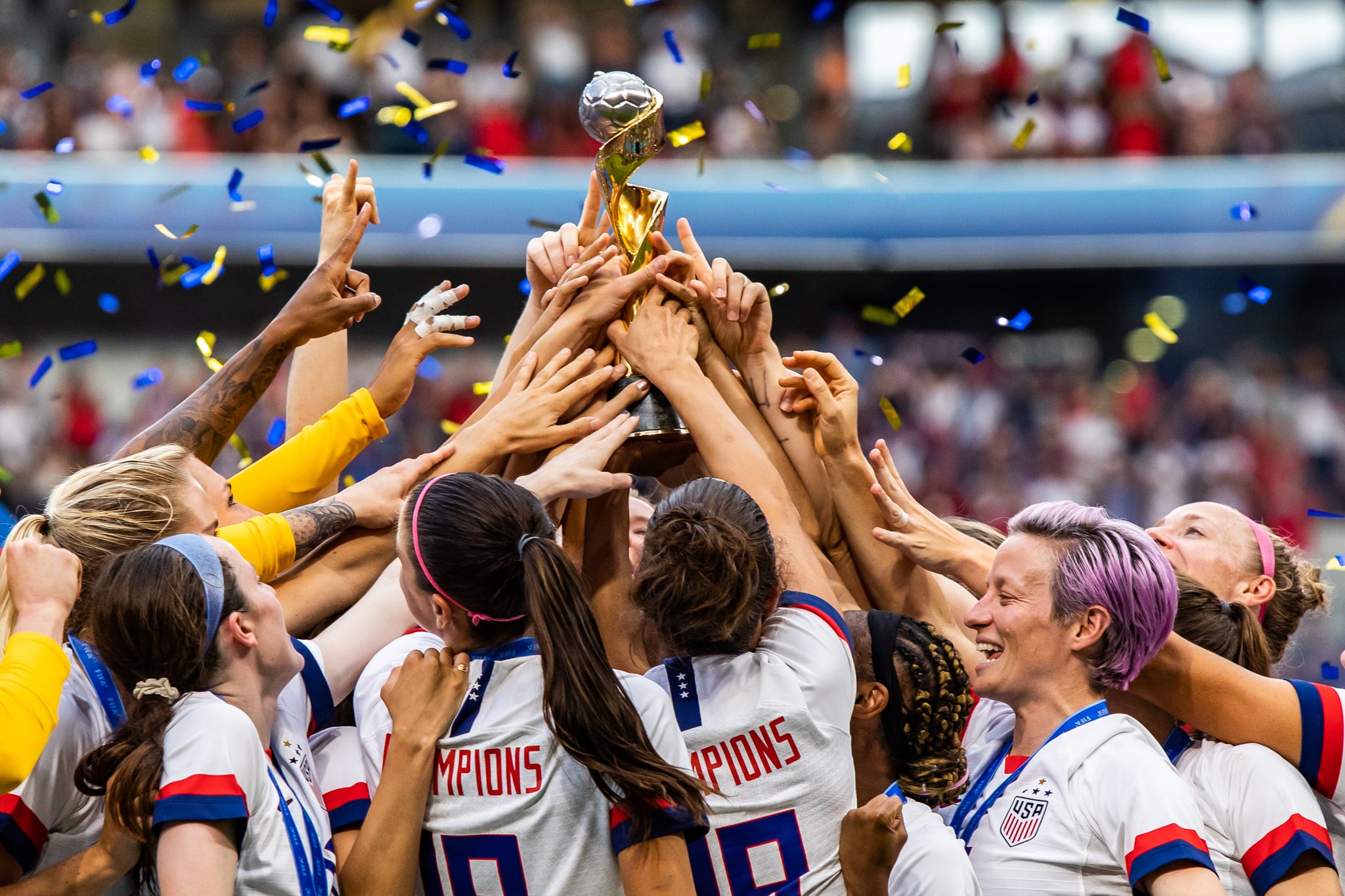
The 2023 FIFA Women’s World Cup is the event of the summer for soccer fans around the world, showcasing an every-four-years matchup between the best national teams from around the world. The tournament kicks off on July 20 and culminates in the final match on Aug. 20, meaning you have a full month of heated soccer games to look forward to. That said, if you’re new to following soccer or are curious how the US Women’s National Team might fare, you may be wondering how the World Cup tournament format works.
Great news: Keeping track of the tournament is surprisingly easy, even if you’re just a casual viewer or new to the sport. Here’s what you need to know about the World Cup format, according to official FIFA rules.
How Do Teams Qualify For the World Cup?
The 2023 World Cup has expanded the field of qualified teams from 24 teams in the last edition (in 2019) to 32 teams this time around. Two of those slots are automatic qualifiers for the co-host nations, Australia and New Zealand. (The men’s tournament, on the other hand, has typically hosted 32 teams. In 2026, it’s expanding to 48 — that’s just one of the differences between the men’s and women’s World Cup.)
The other 30 slots were determined by a series of qualifying competitions held throughout 2022. Each major regional confederation (Asia, North America/Central America/the Caribbean, South America, Africa, and Europe) holds its own qualifying competitions, qualifying 27 teams directly through these tournaments.
The final three spots were determined by the inter-confederation playoffs, which sent the teams from each confederation that just barely missed qualifying outright to one more “play-off” tournament. For 2023, the result of that final tournament was that three countries won the right to send their first-ever teams to the women’s World Cup: Haiti, Portugal, and Panama.
How Does the World Cup Tournament Work?
The Group Stage
The 32 qualifying teams were seeded into four “pots” based on their world rankings. Then, a drawing took place to divide the teams into eight groups of four teams each. The first stage is known as the “group stage,” with teams in each group playing round-robin style so that all four teams in a given group play each other in every possible combination.
During this stage, no one is immediately eliminated. Instead, points are assigned based on the outcome of each match: three points for a win, one point for a draw, and zero points for a loss. At the end of the group stage, the points will be tallied up to determine who moves on to the next stage of the tournament.
The Knockout Stage
FIFA tallies up the points each team earned in the group stage, and the top two teams from each of the eight groups will advance to the round of 16, beginning the “knockout” stage. If there happens to be a tie in points at the end of the group stage, then the FIFA rules set out a series of tie-breaking criteria. There are several tiebreakers laid out, to be used in the following order:
- Largest goal difference in all group matches
- Greatest number of goals scored in all group matches
- Greatest number of points obtained in the group matches between
the teams concerned - Largest goal difference resulting from the group matches between
the teams concerned - Greatest number of goals scored in all group matches between the
teams concerned - Highest team conduct score (based on the number of red cards and yellow cards)
During the knockout stage, a single loss is enough to, well, knock a team out of the tournament. There are no ties permitted from this stage onwards. If regulation time expires and the teams are tied, two 15-minute additional periods will be played to break the tie. If those two periods end and there’s still a tie, teams go to a penalty shootout to determine the winner.
Semifinals and Finals
Teams will continue to be removed from the tournament after a single loss up through the semifinals (the round with four teams remaining).
The two winners of the semifinal matches will advance to the championship (final) match to determine who wins the top prize and who is the runner-up. Meanwhile, the two losers of the semifinals will face off against each other to determine who will finish in third place and who will finish “off the podium” in fourth.
Image Source: Getty / SOPA Images / Contributor
